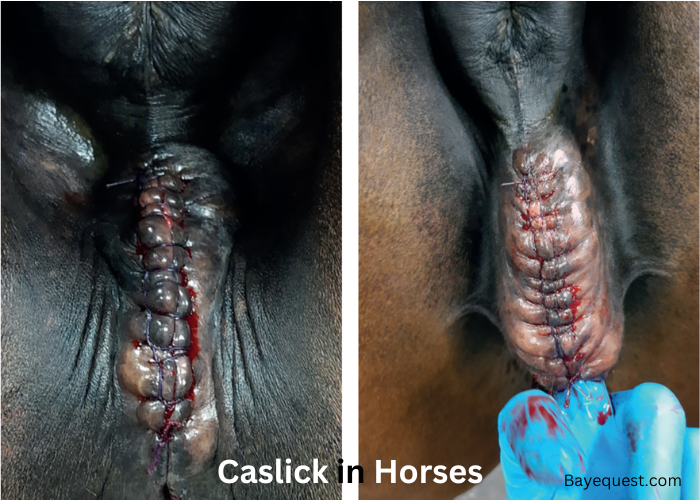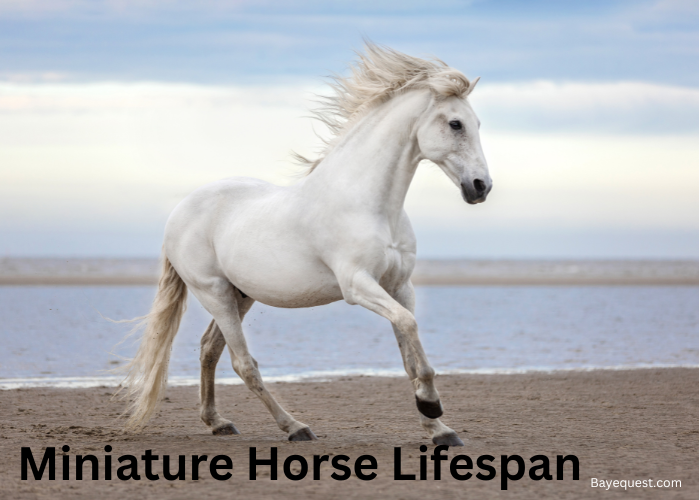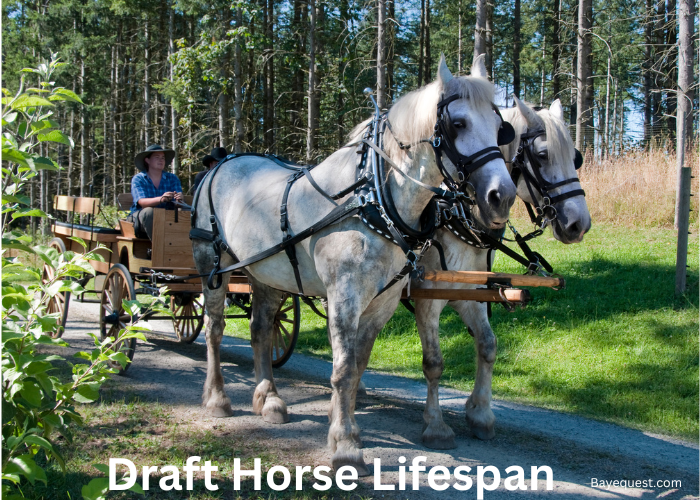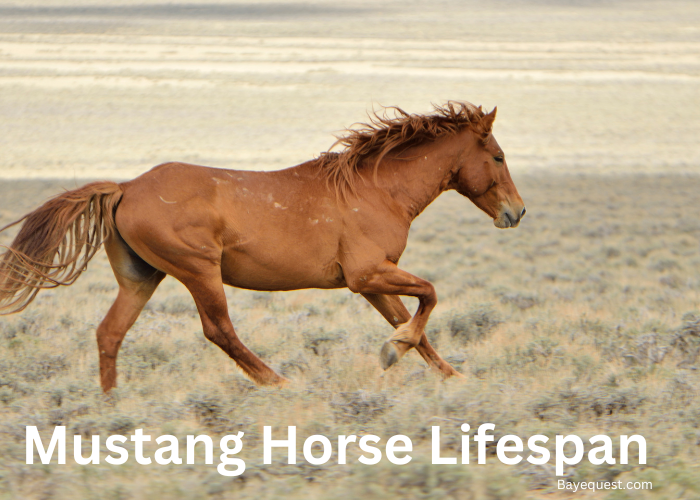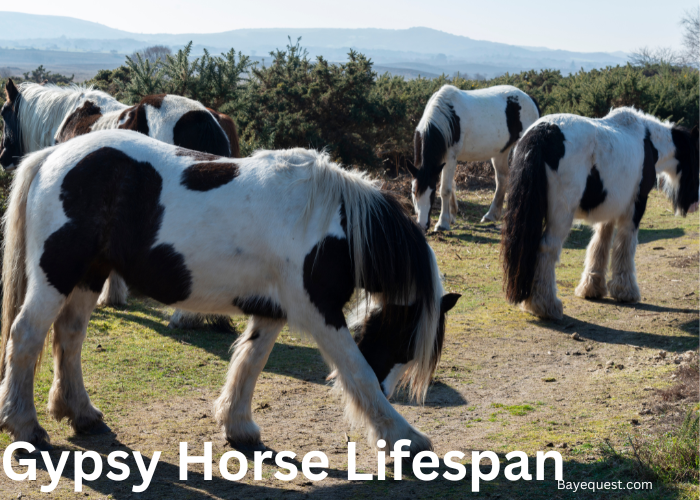Caring for horses means understanding the small things that make a big difference. One of these is the Caslick procedure.
It’s a simple but important surgery that helps mares, especially those used for breeding.
A Caslick isn’t about appearance. It’s about protecting a mare’s health.
With a few stitches, veterinarians prevent infections and support mares through pregnancy.
The result? Fewer health issues, easier pregnancies, and peace of mind for owners.
Want to know how it works and why it matters? Let’s break it down.
What is a Caslick in Horses? Key Takeaway
A Caslick procedure is a surgical technique used in mares to prevent contamination of the reproductive tract. It involves suturing the upper part of the vulva, reducing the risk of infections and improving fertility. This procedure is often recommended for mares with conformation issues or recurring infections.
What is a Caslick Procedure for Horses?
A Caslick procedure, also known as a vulvoplasty, is a minor surgical procedure performed on female horses (mares) to protect their reproductive tract.
It involves closing a portion of the upper vulva, which is the external opening of the reproductive canal.
This procedure is common in broodmares or mares intended for breeding.
Mares with poor vulvar conformation, often due to age, genetics, or previous injuries, can develop a condition known as pneumovagina, or “windsucking.”
This happens when the vulva doesn’t close properly, allowing air, dust, bacteria, and other contaminants to enter the reproductive tract.
These particles can travel to the uterus, potentially causing infections or even infertility.
The Caslick procedure creates a physical barrier, reducing the risk of such contamination.
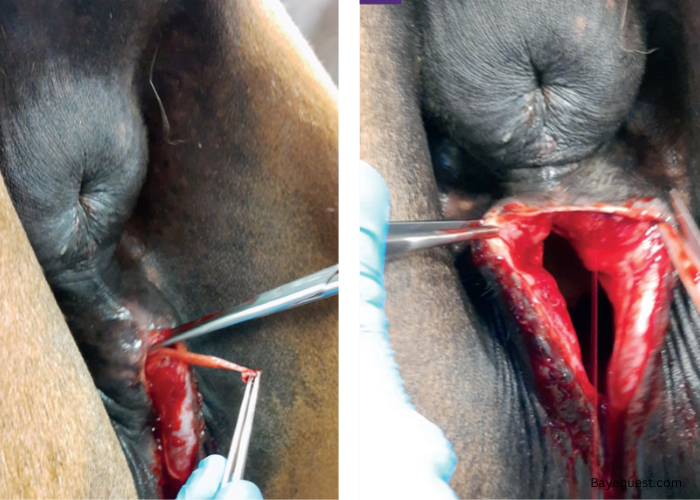
When Does a Mare Need a Caslick Surgery?
A mare may need a Caslick procedure in several specific situations, particularly when her reproductive health is at risk.
The main reasons are:
1. Poor vulvar conformation
Some mares have poor vulvar conformation due to age, genetics, or previous injuries.
This condition can cause the vulva to sit in a position that makes it vulnerable to air, dirt, and bacteria entering the reproductive tract.
For these mares, a Caslick can provide a seal to protect the uterus from contamination.
2. Prevention of “windsucking” or pneumovagina
Mares with conformation issues may experience a condition called pneumovagina, commonly known as “windsucking.”
This occurs when air is drawn into the vulva during exercise or movement, often creating an environment prone to bacterial growth.
A Caslick prevents air from entering, thus reducing the risk of infections.
3. Frequent reproductive infections
Mares with a history of uterine infections, such as endometritis, may benefit from a Caslick to prevent further contamination.
By closing part of the vulva, the procedure lowers the chance of bacteria entering the reproductive tract.
4. Support during pregnancy
Pregnant mares with poor conformation are at risk of infection or premature labor if contaminants enter the reproductive tract.
A Caslick performed early in pregnancy can help ensure a healthier pregnancy by reducing the risk of ascending infections.
5. Older or multiparous mares
Older mares or those who have foaled multiple times often experience muscle relaxation around the vulva.
This makes it less effective at naturally keeping out contaminants.
A Caslick can restore this protective function and help maintain reproductive health.
Benefits of Gestation Caslick Suture in Horses
A gestation Caslick procedure can offer significant benefits for pregnant mares.
Let’s see how a Caslick can support a healthier pregnancy:
1. Reduced risk of uterine infections
During pregnancy, the uterus is highly sensitive to infection.
A Caslick acts as a physical barrier to block bacteria, dust, and other contaminants from entering the vulva.
By preventing these infections, the procedure helps create a safer, more sterile environment for the developing foal.
2. Improved pregnancy outcomes
Infection during pregnancy can lead to complications such as abortion or premature birth.
By minimizing contamination, a gestation Caslick reduces these risks, improving the likelihood of a healthy pregnancy.
Mares with a Caslick are often able to carry their foals more comfortably and without the added stress of potential infections.
3. Protection for mares with poor vulvar conformation
Mares with poor vulvar conformation are susceptible to “windsucking,” or the involuntary intake of air into the vulva.
During pregnancy, this vulnerability can be especially risky.
A Caslick offers these mares essential protection, helping them maintain a healthy uterine environment.
4. Preventing premature labor or complications
Contaminants in the uterus may trigger immune responses or irritation, which can lead to premature labor.
The Caslick procedure reduces this risk, allowing the mare to maintain a stable environment for her developing foal.
5. Ease of breathing and comfort
As the pregnancy progresses, the mare’s body undergoes physical changes. This places additional pressure on the reproductive system.
A Caslick helps stabilize the reproductive tract by keeping it free from external irritants.
6. Peace of mind for owners and breeders
Owners and breeders can feel more assured knowing that their mare has a lower risk of infections and complications during pregnancy.
This small procedure provides long-term benefits, ensuring that both mare and foal remain healthier throughout gestation.
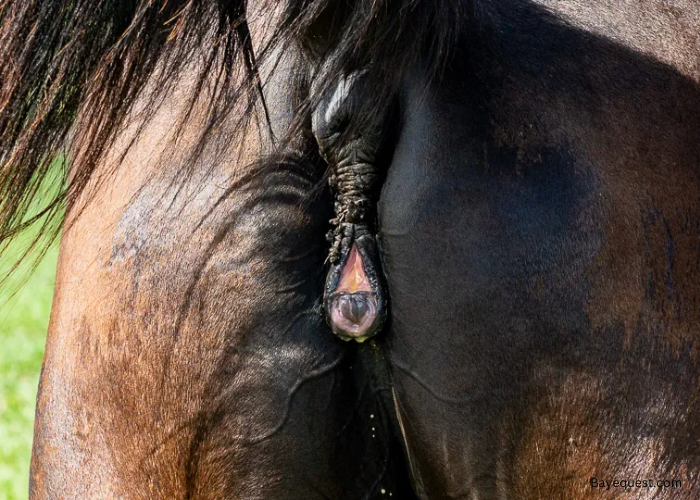
How to Perform Caslick Operation in the Mare
Before beginning the Caslick procedure, gather the following essential tools and materials:
- Sedative: To keep the mare calm and still.
- Local anesthetic: To numb the vulva area and minimize discomfort.
- Surgical scrub and antiseptic solution: To clean and disinfect the area.
- Sterile gloves: For hygiene and to reduce the risk of infection.
- Scalpel or surgical scissors: For removing a small strip of tissue along the vulva’s edges.
- Sutures or surgical needle and thread: To close the upper part of the vulva.
- Suture scissors: For trimming sutures after they’re placed.
- Towel or sterile drape: To keep the area clean during the procedure.
Steps of the Caslick Procedure
Step 1: Prepare the mare
Restrain the mare in a safe, secure area. A chute or stocks may help keep her steady.
Administer a sedative under the supervision of a veterinarian to keep the mare relaxed and prevent sudden movements.
Clean and disinfect the vulva and surrounding area with a surgical scrub to ensure a sterile environment.
Step 2: Administer local anesthetic
Inject a local anesthetic into the edges of the vulva where the incisions will be made. This step is essential to reduce pain and discomfort for the mare.
Wait a few minutes for the anesthetic to take full effect before proceeding.
Step 3: Mark the area
Identify the upper part of the vulva where the procedure will be performed. The goal is to suture the upper two-thirds while leaving the bottom third open for urination.
Mark the incision area if needed to ensure accuracy and even closure.
Step 4: Make incisions
Using a scalpel or surgical scissors, remove a thin strip of tissue (about 1–2 cm wide) from the inner edges of each side of the vulva.
This step exposes fresh tissue to ensure the edges can heal together.
Step 5: Place the sutures
Begin suturing from the top of the vulva, bringing both sides together. Use simple interrupted sutures, spaced evenly along the length of the incision.
Continue suturing until the desired portion of the vulva is closed, leaving the lower third open.
Step 6: Trim excess suture material
Use suture scissors to trim any excess suture material, leaving a short tail for ease of removal later. Ensure the sutures are snug but not overly tight to avoid excessive tension on the skin.
Step 7: Post-procedure care
Monitor the mare closely for signs of swelling, infection, or discomfort.
Apply an antiseptic spray or ointment as recommended by the veterinarian to promote healing.
The sutures heal within 10–14 days. If the mare will be bred or foaling, consult the veterinarian for timing to reopen the Caslick.
How to Manage a Caslick Procedure in Mares
Managing a Caslick in a mare involves regular monitoring and careful aftercare to ensure her comfort and to avoid complications.
Here’s a simple guide to managing a Caslick effectively:
1. Monitor for signs of infection or discomfort
Inspect the vulva area daily for any signs of swelling, redness, or discharge.
Watch for signs that the mare may be in discomfort, such as tail swishing, kicking, or reluctance to urinate.
If these behaviors are noticed, consult a veterinarian for evaluation.
2. Apply antiseptic as directed
Gently clean the area around the Caslick if it becomes dirty, especially in the days immediately following the procedure.
Use an antiseptic recommended by the veterinarian to reduce the risk of infection and promote healing.
3. Protect from irritants
Keep the mare in clean areas, as excessive dirt or mud around the vulva can cause irritation and increase infection risk.
Be cautious with fly sprays, shampoos, or other products around the vulva area, as they may irritate the wound site or cause inflammation.
4. Adjust for breeding or foaling needs
If the mare is being bred, consult the veterinarian to reopen the Caslick as needed before breeding.
A Caslick must be opened prior to foaling to avoid tearing and complications during delivery.
Always schedule this minor procedure in the weeks leading up to her due date.
5. Routine veterinary follow-up
Schedule routine follow-ups with a veterinarian to ensure the Caslick is healing properly and remains in good condition.
In some cases, mares may need a Caslick procedure repeated, particularly if they are prone to “windsucking”.
6. Observation during exercise
Avoid rigorous exercise for a few days following the procedure, as excessive movement can put strain on the sutures.
Once the mare has healed, observe her during rides or activities to ensure she remains comfortable and that no irritation arises.
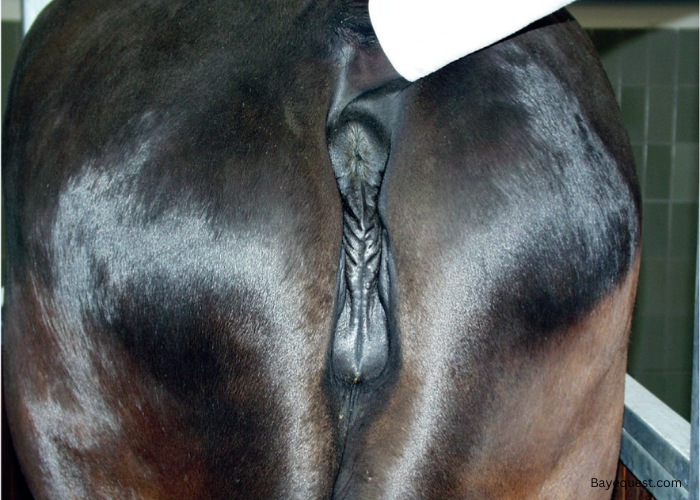
Potential Risks and Considerations of the Caslick’s Suture
While effective, the Caslick procedure carries potential risks and considerations that should be carefully managed.
Some of these risks are:
1. Risk of infection at the suture site
Infection can occur if bacteria enter the area. Proper cleaning and monitoring are essential.
2. Tearing if not reopened before foaling
Failure to reopen the Caslick before foaling can lead to severe tearing of the vulva and surrounding tissue.
3. Discomfort or pain
Tight or irritated sutures may cause discomfort or pain for the mare, shown by signs like tail swishing or restlessness.
4. Urinary retention or incontinence
If the sutures are placed too low, the mare may have difficulty urinating, leading to urinary retention or incontinence.
5. Temporary limitations on breeding and exercise
The Caslick needs to be reopened before natural breeding or foaling, and healing time should be respected before intense activities.
6. Need for repeated procedures in some mares
Mares with poor vulvar conformation may need multiple Caslick procedures throughout their lives.
7. Potential for vulvar scarring
Repeated procedures or improper healing may lead to scarring, which can complicate future breeding or additional Caslicks.
8. Risk of adhesion formation
Adhesions may form if infection or repeated procedures occur, potentially affecting vulvar function.
9. Monitoring for long-term comfort and health
Regular checkups and monitoring are needed, especially for older mares or those with a history of multiple procedures.
Caslick Procedure in Mares: FAQS
Can a Caslick procedure be reversed?
Yes, the Caslick procedure can be reversed if needed. The sutures can be removed by a veterinarian when the mare no longer requires the procedure, such as before breeding or foaling.
Is the Caslick procedure painful for horses?
The Caslick procedure is not painful for horses, as it is performed under local anesthesia to numb the area. The mare may experience mild discomfort or irritation as she heals, but this is usually temporary.
How long does it take to heal after a Caslick procedure?
Healing after a Caslick procedure takes around 10 to 14 days. However, this can vary depending on the individual mare and her overall health.
Caslick in Mares: Conclusion
The Caslick procedure is a simple yet powerful solution for mares at risk of infection.
By protecting their reproductive health, it ensures a smoother path to pregnancy and foaling.
With the right care and attention, the procedure can be a game-changer for both mares and their owners.
Whether it’s preventing complications or providing peace of mind, Caslicks can make all the difference.




